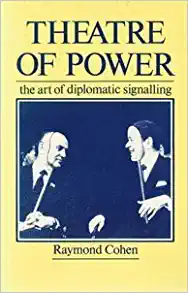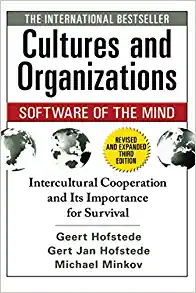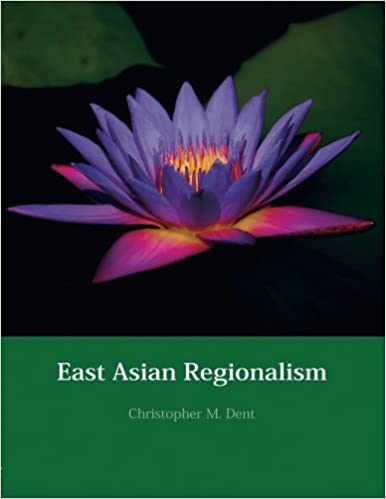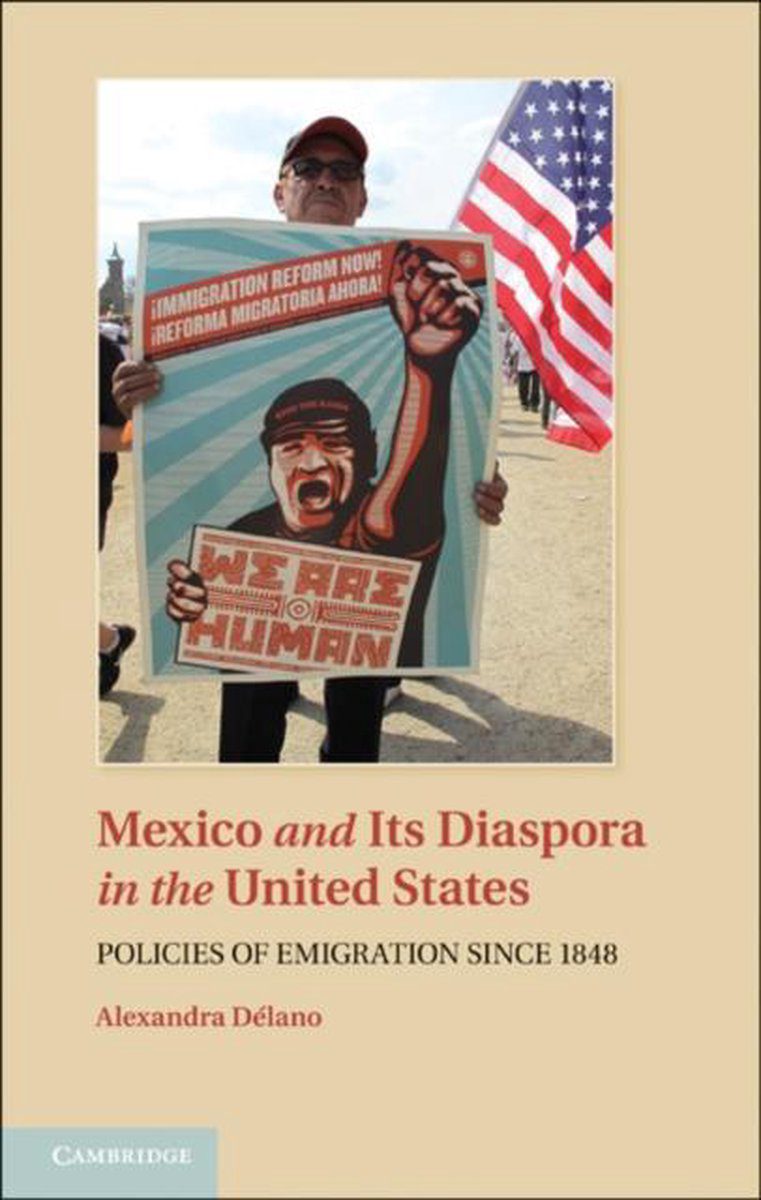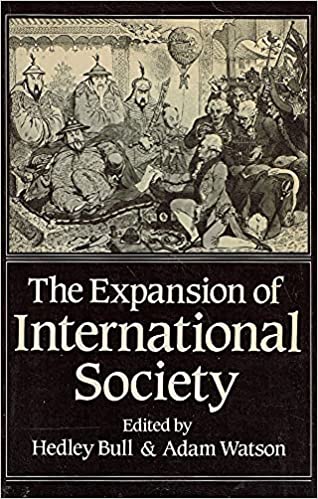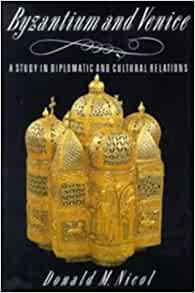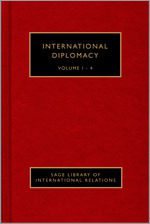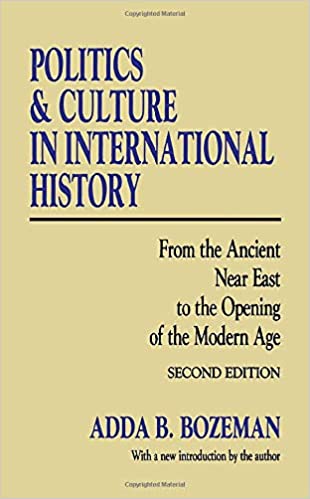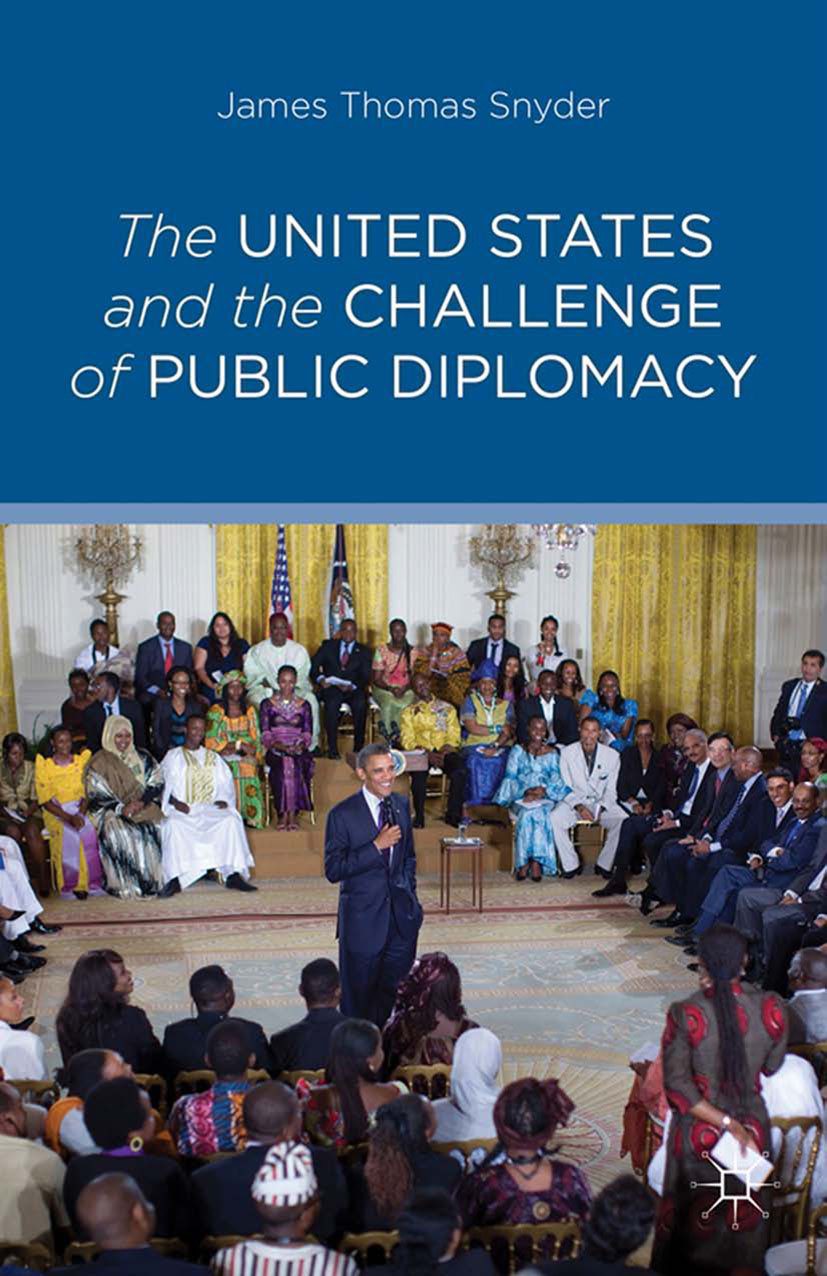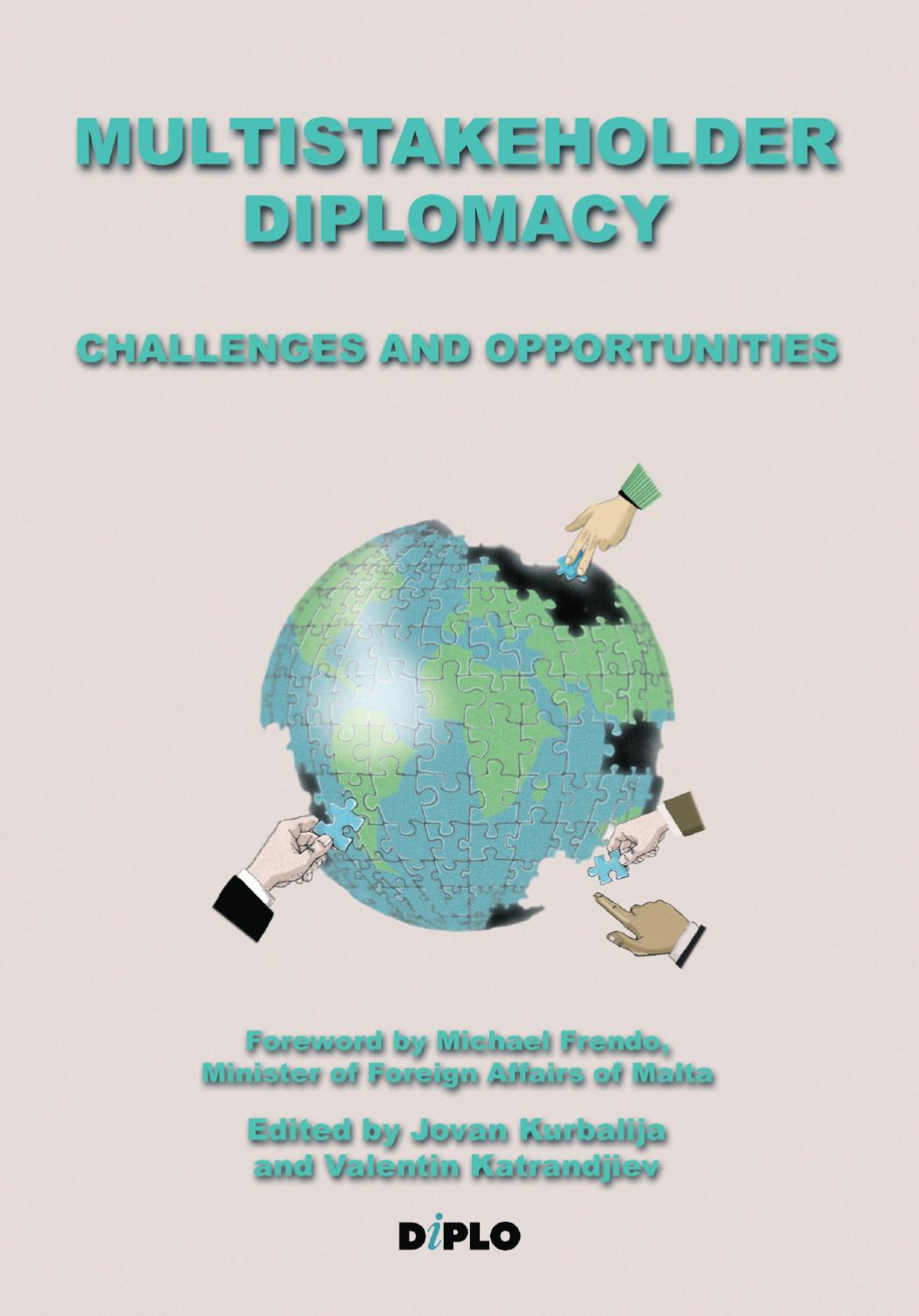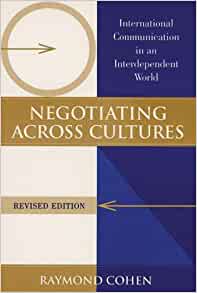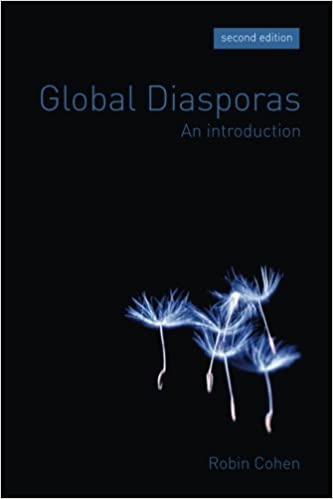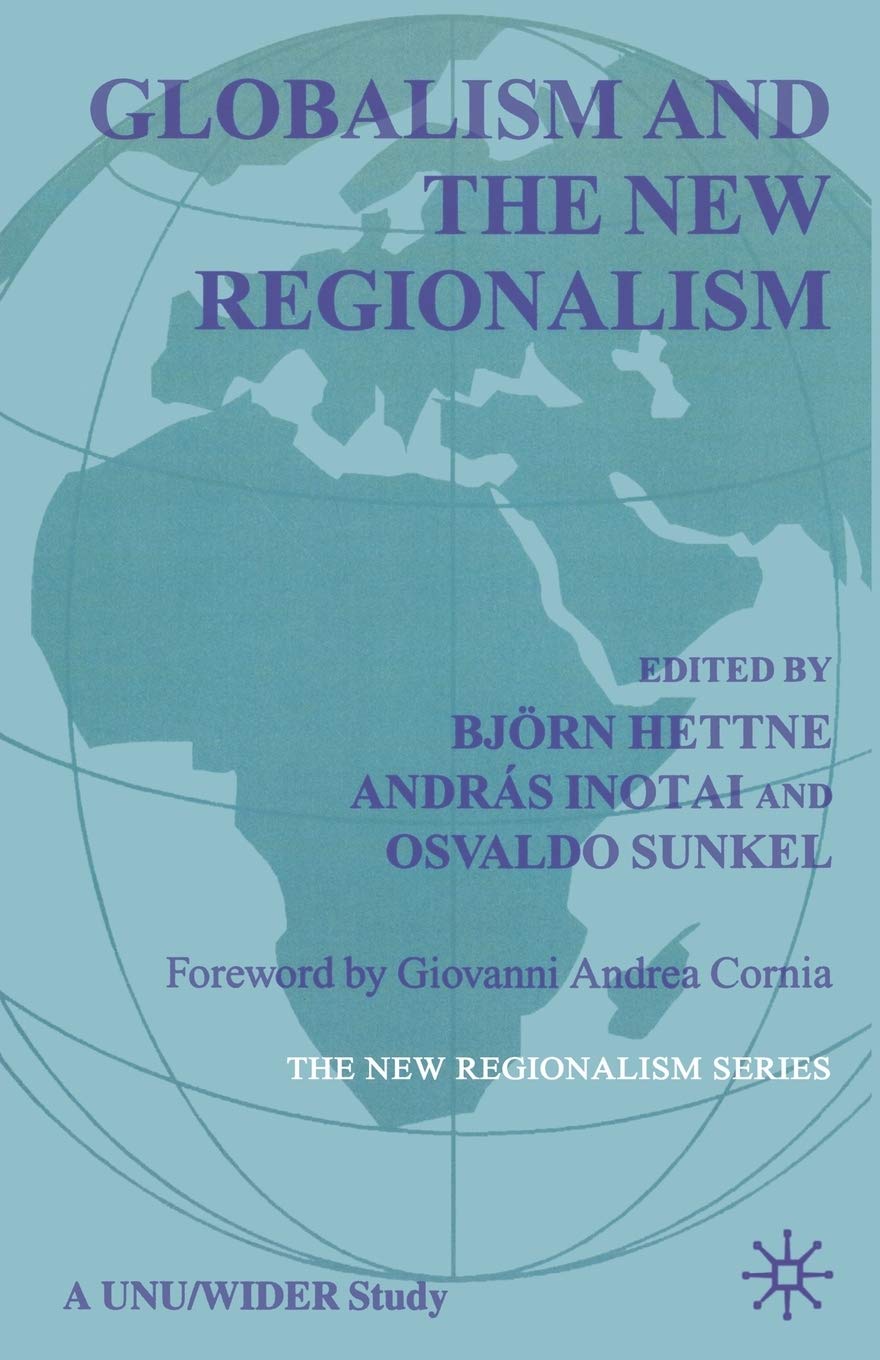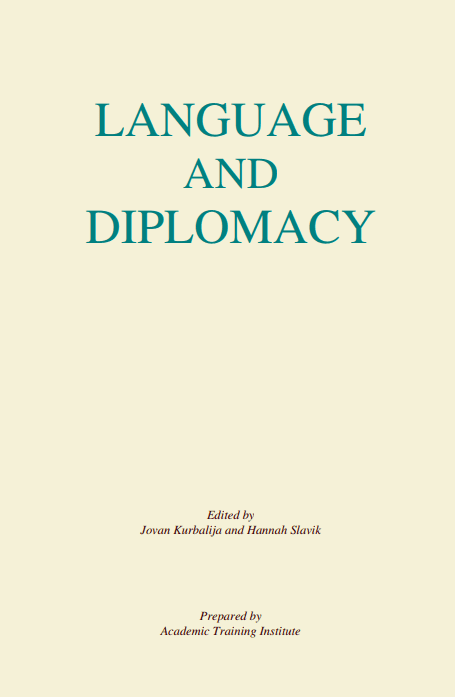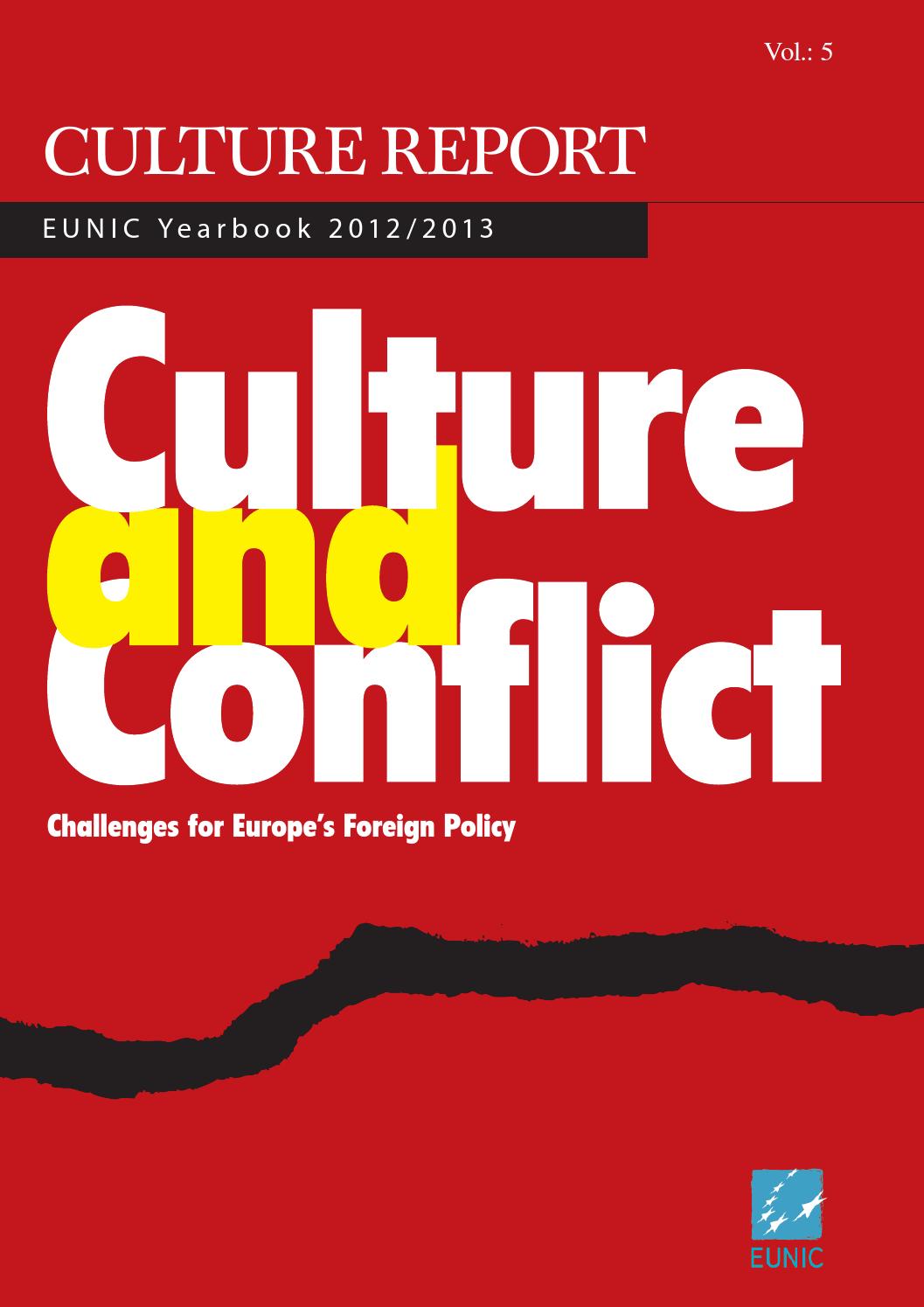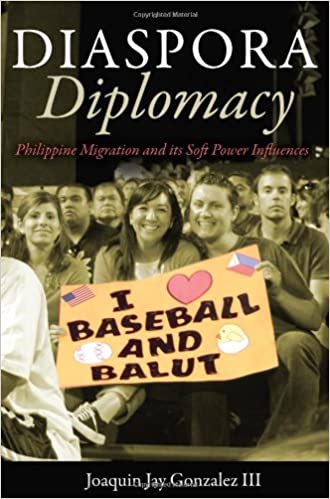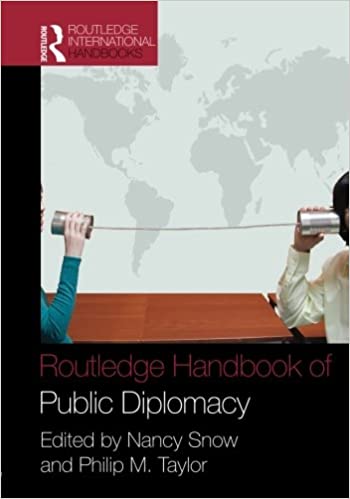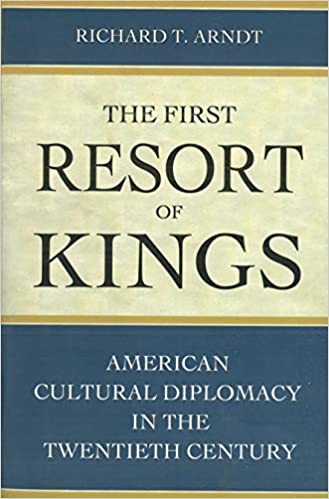LRM: My name is Lew Macfarlane. I’m the diplomatic half – or more accurately, the retired diplomatic half – of our intercultural/diplomatic team. On behalf of my associate, Heather Robinson, and myself, I hope that the “conversation” presented here is just a beginning of an ongoing conversation that will continue in the days to come, and beyond.
HAR: Good afternoon. My name is Heather Robinson. This presentation is directed chiefly at working diplomats, but we hope that those who are theoreticians, academics, or interculturalists will also get some value from it. We believe that the juxtaposition of real-life examples from the diplomatic field with intercultural theory may be a useful combination. We also hope that our presentation will spark memories of incidents that have happened to you.
I have my ancestors to thank for being an interculturalist. After four generations of intercultural marriage, I have five strands of different heritage in my veins. In the last generation, my Swiss-born mother married my Canadian-born American father, after meeting in Venezuela. I was born in the US but at the age of seven months moved to India. I subsequently lived in Turkey, Switzerland, Germany, and South Africa. Later in my life, I lived in the UK, Switzerland, Greece, Israel, and Pakistan. I also have had the privilege, over the last 20 years, of being the senior daughter-in-law in an extended South Asian Muslim family. Educationally, I started with a degree in biology, which led me indirectly into computers and electronics. I spent ten years in high technology. I subsequently received a master’s degree in systems theory, which I applied to improving services to immigrants and refugees. Since 1988, I have been training and consulting on working successfully across borders with Global 500 corporations, such as Daimler Chrysler, Thyssen Krupp, and EADS, primarily in North America, Western Europe, and South Asia.
LRM: Briefly, I was at the University of Chicago planning a career in the academic world when the US State Department made me what I thought was a better offer, so I joined the US Foreign Service. By contrast with Heather, I grew up very much a monoculturalist. I had never traveled outside of Canada and Mexico and I spoke no foreign language when I joined the Foreign Service. I was on a rather steep learning curve as far as other cultures were concerned. Although I think a much better job is done today, little emphasis was placed on intercultural training for young diplomats at that time. One exception was our exposure to Edward Hall’s “The Silent Language.” This book had a big effect on me and I picked up that great line, which I have carried along with me ever since: “We must never assume that we are fully aware of what we communicate to someone else.”1Edward T. Hall, The Silent Language (New York: Doubleday/Premier Books, 1959), 38.
Shortly after language study and basic introductory diplomatic training, I went to the Republic of the Congo as a Vice Consul at a very difficult time in that country’s history. As a learning-on-the job multiculturalist, I developed a question for myself that I have used all my life: “What’s really going on here?” This proved useful, over and over again, when I suddenly found myself in culturally deep waters, and experienced a sudden flash of awareness that I needed to look past my own cultural assumptions and try to achieve a better understanding of the reality with which I was dealing.
I think the US Foreign Service does a much better job today than it used to do in the intercultural training area. As an example, our Embassy in Dar es Salaam, Tanzania, recently did three days of cross-cultural training, which involved everybody in the US Embassy and US mission. It is a hopeful sign, I think, of the way in which we’ve become aware of the importance of this kind of training and cultural awareness.
HAR: We would like to quote from the British historian, Theodore Zeldin. He defines a conversation as a process “in which one starts with a willingness to emerge a slightly different person. It is always an experiment, whose results are never guaranteed. It involves risk. It’s an adventure in which we agree to cook the world together and make it taste less bitter.”2Theodore Zeldin, Conversation (Mahwah, NJ: Hidden Spring, 2000), 26.What we are doing here is an experiment, we’re taking a bit of a risk, and we certainly hope that we will make the world less bitter. What we plan to cover is a basic model associated with culture and four selected aspects of intercultural communication: time, power distance, universalism versus particularism, and high and low context cultures.
LRM: We’ll change our approach from time to time. Sometimes, I’ll start with an anecdote from my Foreign Service career and then Heather will provide the intellectual framework for a better understanding of what happened. Alternatively, to vary the pattern, Heather may start with some intercultural insights that I will then illustrate with something out of my experience. Sometimes we’ll talk about practical experience first, and sometimes we’ll put the theory first. Intercultural communication depends on what we know about ourselves as much as it does on what we know about the other.
HAR: Let’s start with the basics. What do we mean by “culture”? For our purposes, we would like to think of culture as being the attitudes, beliefs, traditions and values shared by members of a social group. These elements are generally transmitted from one generation to the next (there are some exceptions to this, as those of you who work with street kids well know).
Culture influences perception, cognition and behavior: how we see things, how we think about them, and how we communicate them. Culture is not the same as instinct. Instinct is inherited, culture is learned. Because culture is learned, it can also be un-learned and re-learned and we see this process happening constantly.
Culture can be thought of as the “default programming” for humans. If no other learning or experience tells you otherwise, your initial cultural programming will dictate how you see things, think about things, and communicate about things. One of my favorite ways of thinking about culture is the way a group of people tacitly agree to solve the problems that we all face as we move though life, from cradle to grave, from birth to death. Culture is what we do in between with all the “stuff” that comes up. Thus, culture affects every aspect of our lives, whether personal, professional or societal.
As Ambassador Reimann mentioned this morning3Presentation given by Heinrich Reimann during the International Conference on Intercultural Communication and Diplomacy, 20 – 23 February, 2003 (https://www.diplomacy.edu/Conferences/IC. See also the paper by Heinrich Reimann in this volume.) cultural identity is defined by the boundary or frame we are using at the moment. We can put many frames around whatever cultural group we are talking about at any given time. We all are members of various cultural groups, depending on whether we define ourselves in national, religious, tribal, or linguistic culture terms. For example, I may share my professional culture as an interculturalist with some of you here, but share gender culture as a woman with a larger group. We all belong to a large variety of groups, and thus cultures, and are accustomed to shifting from one to another. In this sense, we are all “multicultural”(see Figure 1).
LRM: I think that, as diplomats, former diplomats, or as people involved in this field, much of what we do comes down to interactions between national cultures. For diplomats, this has a double aspect. If we are earning our money, we are effectively conveying the views, concerns, and interests of our own government to the host government. Equally importantly, however, if we’re doing our job we are also analyzing while we are listening, we are decoding the messages from that culture, that society, that government and we are transmitting the messages back accurately to our own government. Obviously, one requirement is putting both categories of messages in culturally appropriate forms. This can be difficult. As one diplomat put it: “If you are to stand up for your government, you must be able to stand up to your government.” Thus, sometimes in dealing with your own government, you may be the bearer of unpopular or unwelcome news from someone else’s national culture. However, that’s part of the job.

I’m going to tell one story which has made the diplomatic rounds, from my service in Tanzania. I don’t know whether we still do this, but at the end of each UN General Assembly session, the US would analyze each of the governments with which we had relations, summarizing how we felt they did—how they had voted—on issues of concern to us. This got be called the UN “Report Card.” We would convey this report to governments in the context of bilateral discussions, which started at the beginning of the UN General Assembly and would go on all year to some degree. I think Washington was surprised when, about 1983, the Tanzanians gave us their Report Card on US voting at the UN, which was duly passed back to Washington. It was an appropriate thing for them to do—we were doing it, why shouldn’t they?—but Washington was somewhat taken aback to have gotten a version of our own reporting format from another government.
HAR: Now that we have a definition, we’d like to give you one simple model of culture, one you may well encounter again. It is a classic model and we think it worth mentioning. Robert Kohls, a lovely gentleman and one of the grandfathers of interculturalism, posits that culture is like an iceberg.4Robert L. Kohls and John M. Knight, Developing Intercultural Awareness: A Cross-Cultural Training Handbook (Yarmouth: Intercultural Press, 1994).
The iceberg has three tiers—a top level of surface culture, a level beneath the surface consisting of unspoken cultural rules, and a level at the very bottom consisting of the unconscious cultural rules. The surface level is that part of the iceberg that is up above the water. If we were to look out at the Arctic Ocean on a sunny day, we might see an iceberg. On the portion that daylight reveals, we could see the contours of the iceberg, how large it is, what color it is and we would have a good sense that we understood what the iceberg was about.
In terms of culture, that surface level represents the aspects of culture that we can take in with our five senses—what we can hear, see, smell, taste, and feel. The aspects of culture represented by this surface culture are such things as music, language, food, clothing, crafts, and architecture. We can perceive these surface differences without further information: I can hear that someone is speaking a different language. I may not be able to understand what they are saying, but I am aware of a difference. It is also important that, generally, experiencing the surface level of a new culture is not threatening; in fact, it is often pleasurable. Many of us like to hear new music or eat new food. International tourism is built on this fact. People are willing to pay good money to travel to experience the surface aspects of culture they may not have at home. It may be part of why you are interested in an international life. I personally enjoy a broad spectrum of the surface aspects of culture. Thus, surface culture differences can be perceived with the five senses and generally are associated with little negative emotional charge.
Imagine now we were to direct our gaze down into the water and look at the iceberg. Because you are now looking through water, things are a bit fuzzy, distorted. We know there is an iceberg there, but we are no longer exactly sure of its size, contours and color. In terms of culture, this is the area of unspoken rules. We cannot see rules with the senses. We discover them either when we step over the line and break someone else’s unspoken rules, or someone steps over our line and we say: “What was that?”

LRM: We experience kind of an “uh-oh” effect. When I was at the University of Chicago, I was at a store buying something and right behind me was a Nigerian exchange student whom I had known slightly from before—we had exchanged greetings. He was trying to buy a $10 lamp and he was trying to convince the sales clerk that he should pay $7 for it. I heard this, and I turned around and said: “Hi. I don’t think that’s going to work here.” I was looking at the clerk who had no idea what was going on. The student said “oh,” did a double take, and realized that his behavior was a reflex. It might have worked at home, but it wasn’t going to work in Walgreen’s. He apologized, paid the money, and we went out and had a beer. It’s an example of how you travel with your own rule book and when you’re working with someone else’s, you may forget, suddenly, some of the elements in it.
HAR: This example of unspoken rules shows that, unlike surface differences, differences in unspoken rules can cause a bit of upset. That clerk in Walgreen’s was not very happy with the disruption into which she was being drawn. She didn’t have the context for it. We can see that not only is there usually some upset associated with the breaking of unspoken rules but, because they are unspoken, you may have to go to someone and explain: “This is the situation—this is what happened.” Someone who is familiar with that culture or is from that culture can tell you: “Well, it’s because we don’t bargain for small price tag items in the US.” So it’s very easy for someone familiar with a given culture to explain what an unspoken rule is.
Now we look very deep into the water. The sunlight no longer penetrates. It’s very dark. Not only do we not know how big the iceberg is, what its contours are, or what color it is, we don’t even know if there’s an iceberg there. We refer to these aspects of culture as the unconscious rules of culture.
It’s precisely the point Dr. Araoz made, in saying: When we think we’re working in indisputable rationality is precisely when we get into the problem, because down at that unconscious level we think that what we perceive and respond to is reality.6Presentation given by Zareen Karani Araoz during the International Conference on Intercultural Communication and Diplomacy, 20 – 23 February, 2003 (https://www.diplomacy.edu/Conferences/IC Not only does this deepest level represent the unconscious rules, it also is generally associated with the most upsetting and divisive experience of difference. Thus, this is the area that we’d like to concentrate on for the remainder of our presentation. The four areas of unconscious rules that we’d like to examine have to do with time, power distance7Geert Hofstede, Cultures and Organizations: Software of the Mind (New York: McGraw-Hill, 1997), 27-28., universalism versus particularism8Charles Hampden-Turner and Fons Trompenaars, Riding the Waves of Culture: Understanding Diversity in Global Business (New York: Irwin, 1993), 33-35., and high and low context9Edward T. Hall, Beyond Culture (New York: Anchor Books, 1976), 84-103..
LRM: I think a difference that’s become important for me is that interculturalists like Heather—and I’m not one of them—are in the business of taking that which is hidden and of making it explicit, of bringing it out. I think diplomats are often doing the opposite. I think we’re trying to keep unspoken those things that everybody knows, or that some people know.
HAR: The first area that I’d like to talk about—and this may be because one of my lines of heritage is Swiss—is time. One of the concepts that you are probably familiar with from the works of Edward C. Hall is the notion of monochronic versus polychronic time10Edward T. Hall, “The Power of Hidden Differences,” in Basic Concepts of Intercultural Communication: Selected Readings, ed. Milton J. Bennett (Yarmouth: Intercultural Press, 1998), 60..
A culture that thinks in terms of monochronic time says: Do one thing at a time. The needs of people are less important than the demands of time. Due dates and schedules are sacred. Plans are not easily changed. People may be too busy to see you or talk to you or spend time with you. People generally live by an external clock. The way I think of monochronic time sense is that people believe that keeping the schedule is socially responsible.
There is a continuum from monochronic on one end to polychronic at the other. The polychronic side of the continuum says that it is acceptable to do more than one thing at a time. Time is there to meet the needs of people. Schedules and deadlines are easily changed. Plans are fluid. People always have time to see people. People live by an internal clock. The way I think of a polychronic time sense is: people think that taking the time to attend to human interaction is socially responsible.
LRM: An example that we’re all familiar with, if we’ve had any intercultural experience at all, is whether standing in line is a respected social norm or whether it isn’t, whether it’s perfectly acceptable to use your elbows, smile and do whatever you can to get yourself next on someone’s agenda. An example I know involved a very crowded visa section at one of our larger embassies. US visas are very popular and people kept crowding up to the front. When other efforts to maintain order failed, the American official (very much reflecting the American idea of order and monochronicity) tried to implement a “take a number” system. In the United States, when you go in to get your driving license renewed or go to the butcher shop, you’re given a little slip of paper with a number on it. When your number is called, it’s “your turn.” This guy tried to set up the system, and everyone came in, took their number, and then crowded up to the desk just the way they’d been doing before. It didn’t solve the problem as perceived by the Americans, but, on the other hand, the problem, if there was a problem, was that the people in the room didn’t see this as a problem. I don’t know how they solved it, if they did.
HAR: I think this is a wonderful example of what happens when we don’t pay attention to the unconscious rules. This is the imposition of the rule book from a different set of unspoken rules. In this case, the “take a number, please” rule (which means “OK, my turn is dictated by this number on the slip of paper and I wait for the numbers to be called in order and then I get my turn”) is imposed onto a system which says, “I get my turn from elbows, or charm, or personal connection.” We often see the imposition of an unspoken rule from one culture onto the unconscious rules of another. It rarely works, at least not with the intended results.
In addition to the concept of monochronic and polychronic time, we’d like to mention three other aspects of time which might be seen as refinements along the monochronic/polychronic continuum.
One is the concept of linear time.11Robert Gibson, Intercultural Business Communication (Berlin: Cornelsen & Oxford University Press, 2000), 47. Those who conceive of time as linear see it as a straight line divisible into measurable and predictable segments. This is the domain of schedules, calendars and timetables. Linear time is useful, in fact essential, in industrial contexts, but for much of the world it is perceived as unnatural, if not downright absurd.
Another way of conceiving time is cyclical.12Robert Gibson, Intercultural Business Communication (Berlin: Cornelsen & Oxford University Press, 2000), 47. Time is thought to consist of cycles that repeat themselves on a daily, monthly, yearly or some other regular basis. Time is not thought of as scarce, but infinite since any point in the cycle will return again. Generally, those who conceive of time as cyclical live in close association with nature and its cycles, possibly in an agricultural context.
LRM: When I got to the Congo and was assigned as Vice Consul to one of our small posts in the eastern part of the country, I became quickly and profoundly aware that I was in a society that ran on very different principles than my own. One feature is a much more flexible approach to time. On one occasion, I invited a Congolese official to my house for lunch at noon on a Tuesday. He accepted with pleasure. I already had learned from experience that time wasn’t handled in quite the same way as at home, but I had to make further adjustments in my assumptions when the official came to lunch at 1) 1:00 instead of noon, 2) on the following day, and 3) accompanied by a colleague. Fortunately, I was home at that time, there was cold beer and food, and it ended up a very pleasant meeting.
HAR: The last way of conceiving of time we are going to mention is event-related.13Robert Gibson, Intercultural Business Communication (Berlin: Cornelsen & Oxford University Press, 2000), 47. In a world of event-related time, the right time for something to take place is when it happens. Generally, this is associated with certain related conditions being satisfied such as the right people have arrived, the mood is right or the weather favorable.
LMR: In the 1970s, I was US Consul in Zanzibar. I periodically took the early morning East African Airways DC-3 to Dar es Salaam for meetings at the embassy, a trip that took about 20 minutes. As I recall, the standard departure time was 7:30 a.m. One morning, I had checked in and a few minutes after 7:00, the flight was called. We were probably in the air by 7:15. Pretty simple explanation, really, from the flight attendant: “Everyone on the manifest had checked in, so we left.”
I guess that for most of us there are features of our own culture that drive us slightly crazy. In my case, I love history and I am constantly dismayed to see how many Americans don’t pay much attention to it. This sometimes has definite practical consequences. At one of my posts, there was a growing problem of narcotics trafficking, and it was agreed that there should be some kind of bilateral effort to deal with it. A detailed plan was developed by a team of embassy officers, working with some host country people, and a lot of work had gone into the project. After the process was pretty well along, one of the local people who worked for the Embassy finally let us know, with some embarrassment (because he was telling us something that we really should have known): “You know, we developed a program very similar to this eight or nine years ago.” None of the Americans responsible for the program had known this. We were very focused on what was going to happen next, on future developments, and often did not look back to learn highly relevant lessons even from the very recent past.
This attitude is reflected in other policies as well. The US Foreign Service rotates its officers typically every two or three years. For security and space reasons, we retire almost all of our official files on a two-year cycle. Virtually all classified files and a lot of the rest are then either destroyed or shipped back for storage in Washington. At this point, they are not likely to be referred to again since people at the post don’t know what’s in them and have no idea what to ask for. If you were trying to devise a system intended to minimize institutional memory, you could hardly do better.
HAR: This story illustrates how a particular cultural time-orientation influenced the events in this case. By time-orientation we mean how much relative consideration or importance we place on the past, present or future in our minds. A psychologist by the name of Cottle asked people in numerous countries to draw circles that represented the relationship of past, present and future (see Figure 3)14Tom Cottle, “The Circles Test: An Investigation of Perception of Temporal Relatedness and Dominance,” Journal of Projective Techniques and Personality Assessments 31 (1967), 58-71.

Many variations appeared in the way people from different parts of the world drew these circles: how big they were in relationship to one another, how much they overlapped or if they touched at all. In the example we have shown, one finds a possible explanation for why the US Foreign Service created a policy that calls for the rotation of officers every two or three years and the retirement of official files on a two-year cycle. In the US drawing, “the past” is shown as a comparatively small circle and it overlaps quite a bit into “the present,” almost as if the past were trying not to be too far in the past. Contrast this with the circles drawn by the Indian study participants which characterized past, present and future as equal in size, giving each phase equal value and just touching, but not overlapping, connected but not rushing into one another. Lew’s story of the absence of institutional memory of the plan to address drug trafficking illustrates how something as seemingly abstract as time-orientation can influence something as pragmatic as staff rotation and record keeping.
LRM: A second unconscious rule we would like to discuss is power distance. One of the jobs of diplomats is to assist their own country’s companies trying to do business abroad. In Nepal, there was a hot competition for a pre-feasibility contract for a very large hydroelectric project. The US company had a local representative who was an extremely well qualified engineer. This guy, who I’ll call Fred, was doing a great job working with local experts and technicians and laying the groundwork for his company’s bid. I gradually realized, and so did Fred (who was originally from Europe), that he simply did not have the status to deal with the all-important higher-level officials. He and I both agreed that, to stay in the running, his company needed to send out a high-level official to meet with senior government people. We both made this recommendation to the company’s US office. Their reply: “Fred can answer any questions that come up.” They never sent out a senior representative. Other companies from Europe, Japan, and Canada did, and the US company did not get the contract.
HAR: The concept of power distance is another continuum. In high power distance cultures people accept that inequalities in power and status are natural or existential. Those with power tend to emphasize it, to hold it close and not delegate or share it, and to distinguish themselves as much as possible from those who do not have power. However, they are expected to accept the responsibilities that go with their power, especially when it comes to looking after others.
In low power distance cultures, people see inequalities in power and status as man-made and largely artificial. It is not natural, though it may be convenient, that some people have power over others. Those with power, therefore, tend to de-emphasize it, to minimize the differences between themselves and subordinates and to delegate and share power to the extent possible.
In the story about Fred and the hydroelectric project, the higher power distance local government officials needed to work with someone with status they recognized to feel comfortable doing business. The low power distance US company decision-makers believed Fred, the technical expert, had the necessary knowledge to conduct business, but in a high power distance cultural context it is not what you know, but where you are in the hierarchy that matters.
LRM: I think one power distance example where we’ve shown sensitivity to what other cultures expect from us is the choices we’ve made for US Ambassadors to Japan: very senior, well-respected, “elder statesman” types who listen much and say relatively little, but who are perfect vehicles to convey important messages with authority within a very hierarchical, status-conscious society. Examples include former US Senator Mike Mansfield, former Vice President and presidential candidate Walter Mondale and, most recently, former Senate Majority Leader Howard Baker.
By contrast, during one of my African posts, we had a working visit from an Assistant Secretary of State, a recent political appointee. This superachiever was the youngest person ever to achieve the rank of Assistant Secretary of State. He was in his thirties, and had the misfortune to look as if he were six or eight years younger. While he had a good grasp of his substantive portfolio and talking points, it was clear in his meetings that the senior officials with whom he worked had real difficulty taking him as seriously as his rank would have warranted. He just wasn’t senior enough.
HAR: As we have mentioned, power distance is a continuum, as shown in Figure 4. Some cultures are higher power distance, and some are lower. One of the characteristics associated with high power distance is a steep hierarchy. For instance, military culture almost everywhere is high power distance; a general has a very different degree of power than a foot soldier. In Figure 4, the steeper pyramids represent the end of the continuum associated with higher power distance, and the flatter pyramids the end of the continuum associated with lower power distance.

You may want to debate the exact order on the list shown in Figure 4, but the point we would like to make here is that some cultures place greater value on who you know, and others a greater value on what you know.
LRM: When I was assigned to the Bureau of African Affairs in Washington, I worked closely with a number of African embassies. One feature of that job was serving as a cultural and political guide to those countries’ representatives in our national capital. Some middle-level diplomats, and even an ambassador or two, were diffident about making contacts with people they perceived as senior, particularly in Congress. My reading was that staff people and members of Congress were very open to these meetings, sometimes asking me why they did not hear more from these embassies. I spent a lot of time encouraging those diplomats to be more aggressive in seeking appointments with the officials whom some of them considered to be “too senior.” In terms of how the Washington, DC subculture worked, there were doors open to them that they perceived as closed.
HAR: The third area of unconscious rules is the continuum of universalism/particularism. Universalism contends that there are absolutes that apply across the board, regardless of circumstance or the particular situation. What is right is always right. We should apply the same rules to everyone in like situations. To be fair is to treat everyone alike and not make exceptions for family, friends, or members of your in-group. In-group/out-group distinctions are minimized. Where possible, we should lay our personal feelings aside and look at the situation objectively. While life may not be fair, we can make it more fair by treating everyone the same. Particularism, on the other hand, contends that how we behave in a given situation depends on the circumstances. What is right in one situation, may not be right in another. We treat family, friends and our groups the best we can, and we let the rest of the world take care of itself, with the implicit expectation that everyone else will be taking care of their in-group as well. Our in-groups and out-groups are clearly distinguished. Exceptions will always be made for certain people. To be fair is to treat everyone as unique. No one expects life to be fair. Personal sentiments are important and should be relied upon.
LRM: A certain diplomatic situation arises over and over, all over the world. A visa applicant, who later on turns out to be the son, cousin, or niece of a senior official, is denied a visa to go to the US. Some more senior embassy official (the deputy chief of mission, or sometimes the ambassador) then gets a request to meet with the official in question. The meeting takes place, other matters are discussed, and finally, near the end of the meeting, the official relates the story about the denial and asks if anything can be done about it. I became quite familiar with these cases. My standard assumption was that the visa officer had looked at the case on its merits and made a fair decision. The only commitment I would make in such cases was to review how the case was handled.
HAR: So the system you were working with was a universalist system: these are the rules and if the decision was made in accordance with the rules, it stands. However, the people who appealed to you came with a particularist orientation: these are the rules, but let me tell you who my in-group is so that you can apply the rules for my particular situation.
LRM: Exactly. A further interesting aspect to these visa appeals comes up, as well. Under US law and regulation, no one, not even the ambassador, may legally direct a consular officer to issue a visa or to reverse a previous decision. This is to protect the integrity of the process and to protect the visa officer, who may be at a junior level, from pressures to reverse a sound decision. Officials from more particularist cultures often find this hard to believe.
HAR: The answer to the question that follows can show tendencies in a culture towards universalism versus particularism:
You are riding in a car driven by a close friend when he hits a pedestrian. There are no other witnesses and the pedestrian is bruised but not badly hurt. The speed limit in this part of the town is 30 kilometers an hour, but you noticed that your friend was driving 55 kilometers an hour. His lawyer tells you that if you will testify under oath that your friend was driving 30, he will suffer no serious consequences.17Charles Hampden-Turner and Fons Trompenaars, Riding the Waves of Culture: Understanding Diversity in Global Business (New York: McGraw-Hill, 1998), 163.

Figure 5 shows the results Fons Trompenaars compiled when he asked this very question in several countries, some of which we have shown.
To summarize the concept of universalist versus particularist: the universalist says of the particularist, “You can’t trust them, they always help their friends,” while the particularist says of the universalist, “You can’t trust them, they don’t even help their friends.”
The last area of unconscious rules we would like you to consider today is the continuum of high to low context cultures. In many ways the idea of high and low context in cultures integrates the unconscious rules we have spoken of so far, along with others.
In high context cultures, people tend to be collectivistic. In-groups are strong and people spend much time together, thus more shared experiences and common understanding is continuously being fostered. Interactions are interpreted with much attention to detailed contextual cues such as the nature of the relationships and time and place of interaction. Words are not always the primary carriers of meaning. What is not said may be more important than what is said.
In low context cultures, people tend to be individualistic. In-groups are not as well developed as in high-context cultures and people spend less time in them; thus, there are fewer shared experiences and less shared understanding. One has to say things explicitly as words are the primary carriers of meaning. What is said is more important than what is not said.
LRM: I’d like to illustrate this principle with what I think is an exceptionally good example. US Ambassador Carl Coon, in addition to all the other skills and talents he brought to the job, illustrated extraordinarily well how good diplomats bring intercultural sensitivity to the position. It is almost certainly not a coincidence that he was the son of a world-class anthropologist. He is remembered as one of the most effective envoys to the country in which he served. I can’t improve on his words, so let me just quote him:
Before I would get to a new post, I would bone up on the geography, history, social structure, and literature of the targeted area, plus any other background that seemed relevant. Perhaps I’d read a novel or two by a local author. After my arrival I would start what you might call the lab phase. I would seek out and cultivate bicultural individuals sensitive to cross-cultural nuances and willing to explain them to me. I would travel around the area as much as I could. I would observe, collate, and gradually assemble a practical working understanding of the prevalent attitudes, values and concerns, particularly those that differed from my country.
My primary motive was curiosity, but the result of my efforts paid both immediate and long-term dividends. In the short term I was more effective as a diplomat. If Washington wanted me to make a point, I knew how to make it. When the locals wanted to make a point to my government, I knew how to interpret it.19Carl Coon, Culture Wars and the Global Village: A Diplomat’s Perspective (Amherst: Prometheus Books, 2000), 10-11.

HAR: Figure 6 shows that in a high context approach to matters—the approach Carl Coon expresses—we start with diffuse attention to the relationships involved. As we gain clarity and understanding in this broad context, we gradually focus on the specific task. Using the low context approach, we start with the identified task and then move out to build relationships where necessary in service of the task.21Adapted from Hampden-Turner and Trompenaars, Riding the Waves of Culture (1998), 89. Both approaches recognize the importance of both task and relationship. The task and the relationship are like the two reins used in controlling a horse: you must use both, in balance, to move forward. If you rely on only one, your horse will go around in circles.

Figure 7. shows Edward Hall’s placement of a number of countries on the low to high context continuum.
LRM: I had the privilege of extensive dealings, in one national capital, with an exceptional diplomat. She had served as the equivalent of Assistant Secretary for the Americas, had spent time in the US and knew our country and culture very well. We worked together closely on issues of importance to both our countries. On one occasion, I had handed over a diplomatic note that I wanted to ensure wasn’t misinterpreted, and offered this guidance: “Please don’t read between the lines… just read the lines.” She and I both laughed—it was one of those acknowledged intercultural moments. I knew her country well enough to know that there would be a search for hidden meanings. She knew ours well enough to advise her governmental colleagues that, if they started to look for hidden meanings, they would miss our message.
HAR: In effect you were reminding her that the diplomatic “rule book” is low context.
LRM: But diplomats need to be able to operate in and between both and, on many occasions, to implement those low context rules with high context awareness.
We’ll conclude our conversation here, and reaffirm our hope that some of the issues and topics raised will provide the foundation for an ongoing conversation about the relationship between intercultural communication and diplomacy.
Recommended Reading
Nancy Adler, International Dimensions of Organization Behavior (Cincinnati: International Thomson, 1997).
Glen Fisher, International Negotiation: A Cross-Cultural Perspective (Yarmouth: Intercultural Press, 1980).
Glen Fisher, Mindsets: The Role of Culture and Perception in International Relations, Second Edition (Yarmouth: Intercultural Press, 1997).
John Kenneth Galbraith, Ambassador’s Journal: A Personal Account of the Kennedy Years (New York: Houghton Mifflin, 1969).
Martin J. Gannon, Understanding Global Cultures (Thousand Oaks: Sage, 1994).
Monteagle Stearns, Talking to Strangers: Improving American Diplomacy at Home and Abroad (Princeton: Princeton University Press, 1996).
Craig Storti, The Art of Crossing Cultures (Yarmouth: Intercultural Press, 1989).
Craig Storti, Figuring Foreigners Out (Yarmouth: Intercultural Press, 1999).



